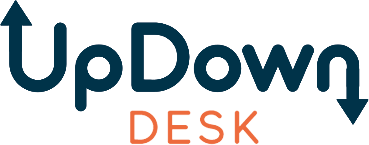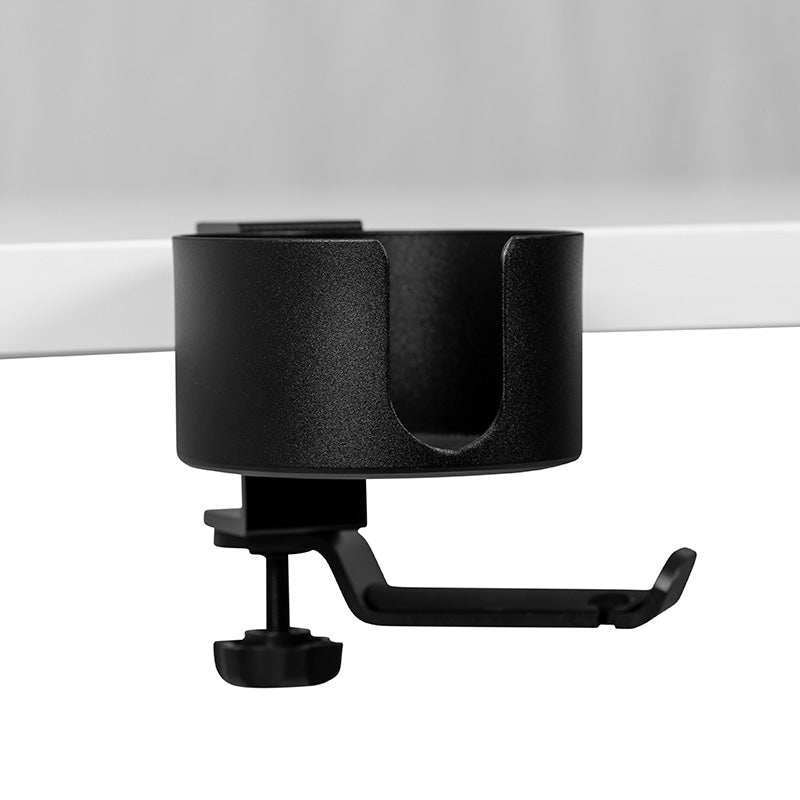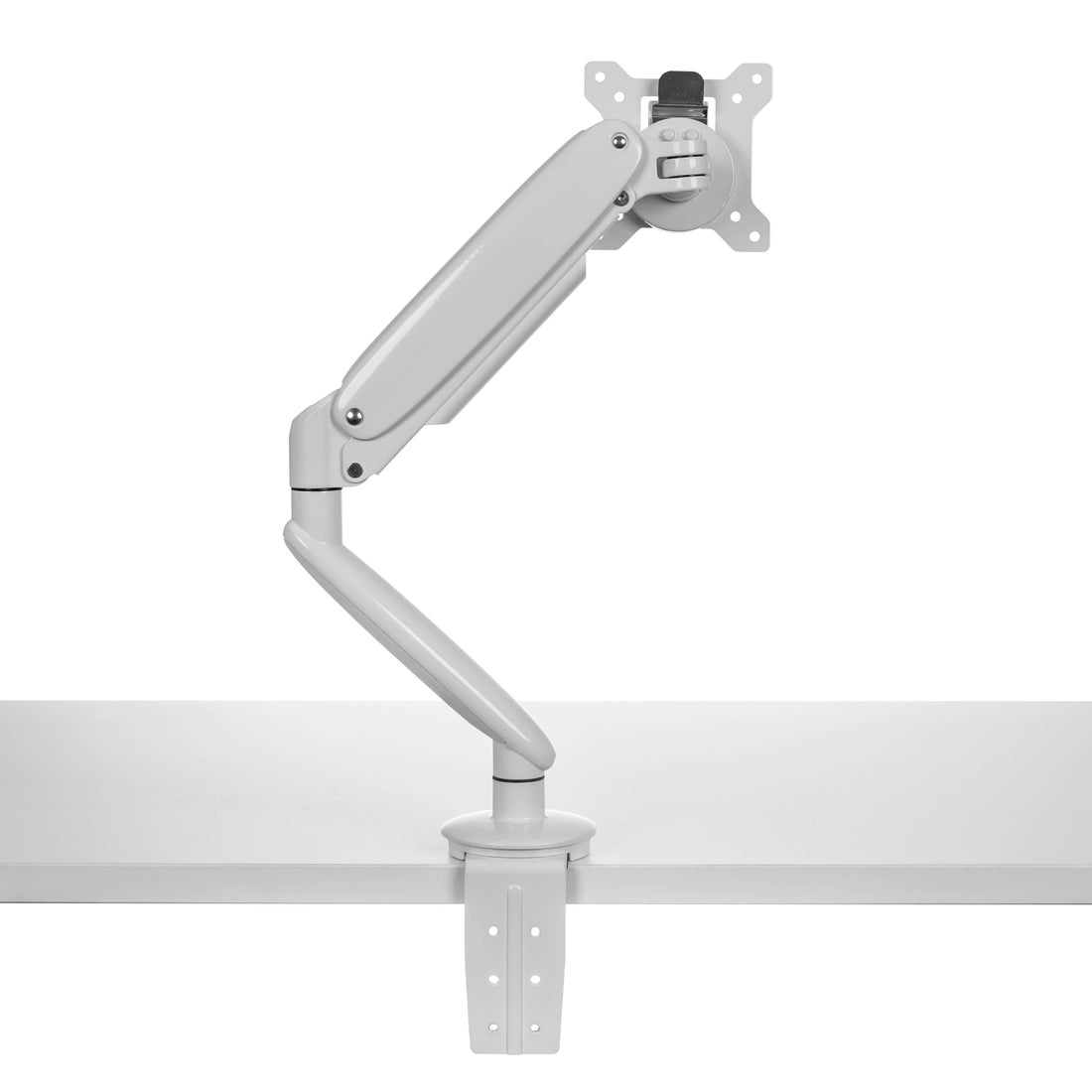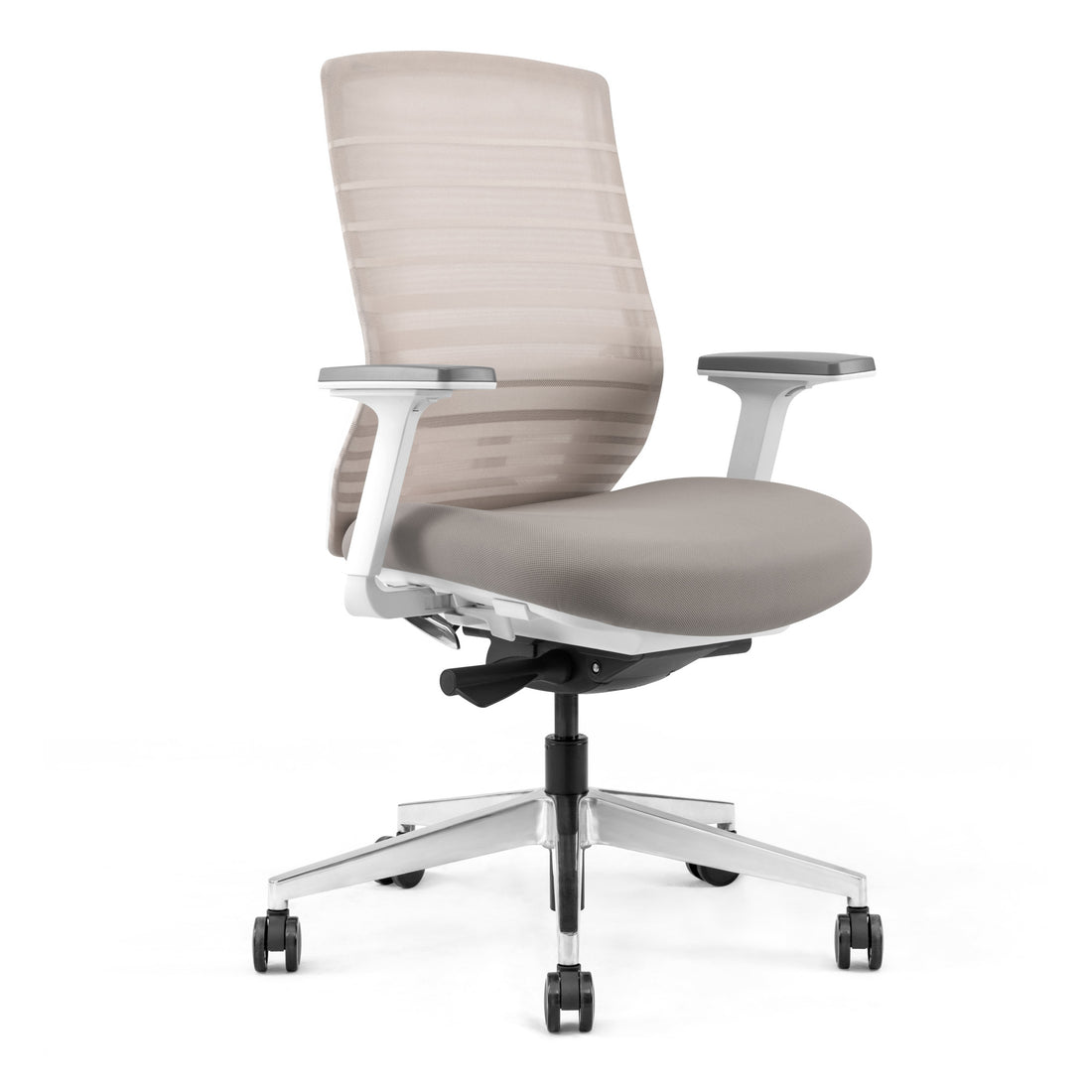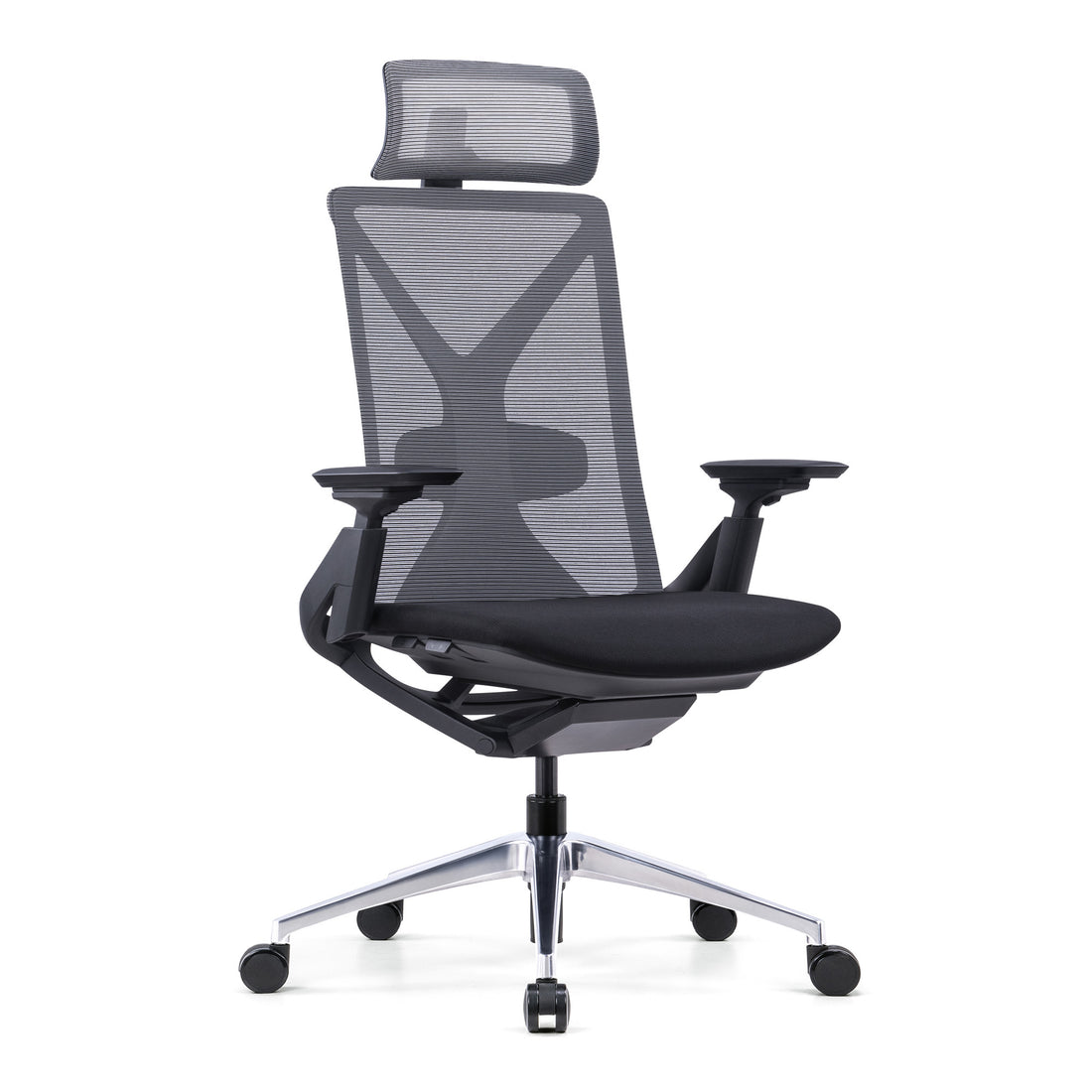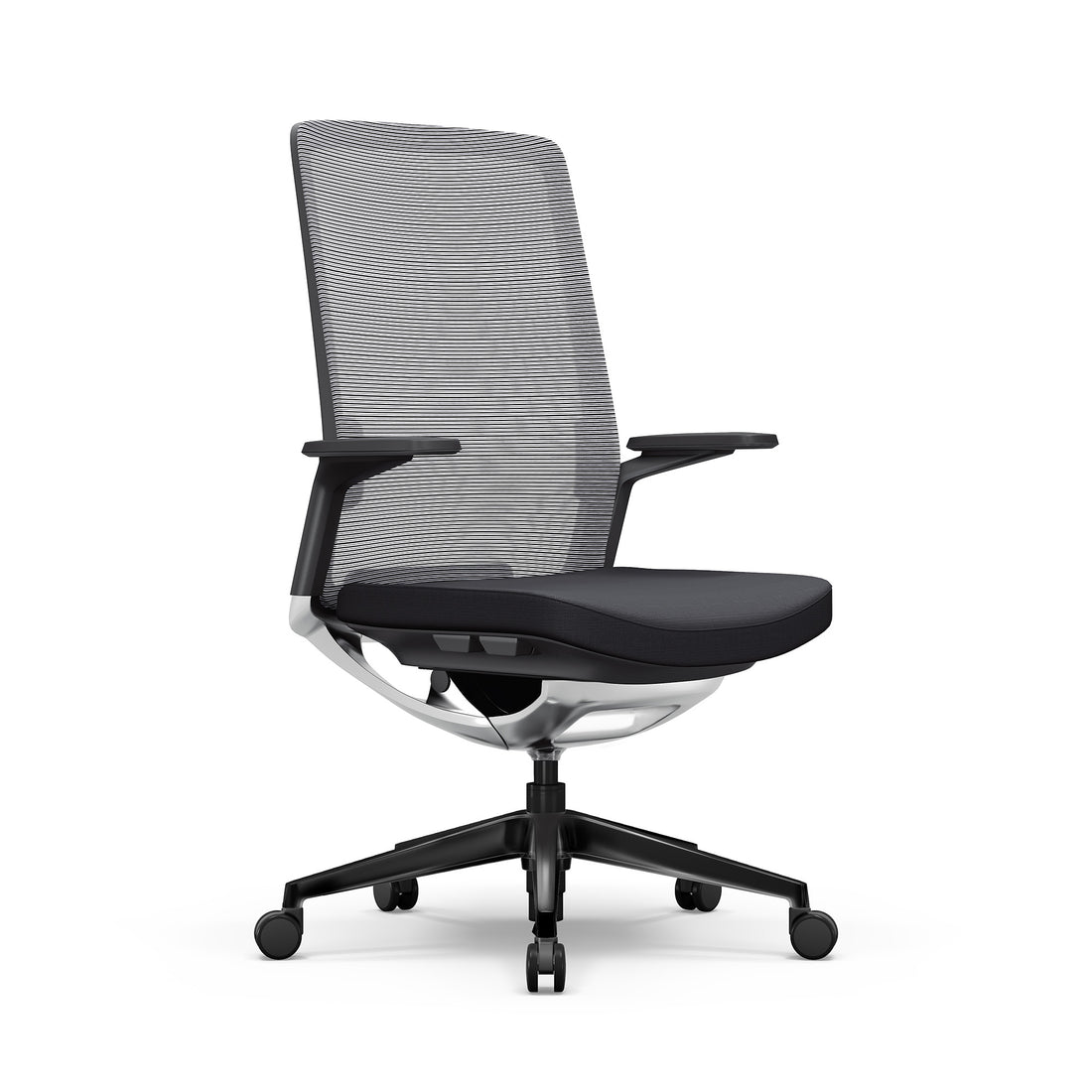Standing desks are great tools for allowing you to get up and stretch your legs while you work, which is why many people are now incorporating them into their office spaces. But the prolonged strain on your legs and knees has got many people wondering if it’s bad to use a standing desk all day.
But what if these stand-up desks could be harmful? Is standing at a desk better than sitting? What are the advantages to a standing desk that you don’t get sitting down?
If you’ve asked these questions, you’re in the right place.
Like everything in life, standing desks have advantages and disadvantages. What may be good for one person could be bad for another.
In this article, we discuss whether it’s bad to use standing desks all day. We take a look at the benefits of these desks and the correct way to use them.
Is My Standing Desk Harmful?
A standing desk can be bad for you if you use it for too long. Much like sitting for hours on end, being on your feet can reduce circulation. Anyone who’s worked in retail knows the woes of being on your feet all day. Chances are, we’ve all had aching feet at some point.
Yes, standing desks are great. There are lots of good points in their favour. But that doesn’t mean there aren’t a few low points too.
Standing for too long has several harmful effects:
- You can get muscle fatigue
- It puts stress on leg joints, muscles, and tendons
- It can cause swelling in the legs
- You can strain your shoulders if the desk isn’t the right height
- You can get varicose veins with a standing desk.
- Your mental function can decline if you’re not used to standing for long
Discomfort And Fatigue
Most office workers have probably been sitting and working in chairs since they first entered school. Unless you work in a profession that requires standing and walking for significant lengths of time, your body is simply not used to it.
Transitioning to a standing desk can cause discomfort and fatigue in all areas of the body. It requires engaging muscle groups that are not utilized while sitting, especially in the butt and hips. A sit-stand desk can make the transition more gentle.
Foot Pain
Much like the point above, your feet might not be adapted to carrying your weight for long periods. This not only increases strain and discomfort but can increase the risk of injury. Additionally, having your feet in only one position on a hard floor makes for poor circulation. This can lead to inflammation and tissue damage.
One solution to this is investing in an anti-fatigue standing mat.

Cardiovascular Issues
Standing for prolonged times might be detrimental to people with cardiovascular issues. For example, it could cause deep vein thrombosis to develop.
A common concern is that blood pooling in the lower limbs can cause varicose veins. These enlarged veins may be a sign of poor venous health. Most people think they are unsightly so try to steer away from having this issue.
Mental State And Productivity
A 2017 study published in Ergonomics found that standing could improve creative problem-solving. However, it was also associated with deteriorating sustained attention and reaction time.
The effect, however, seems to vary between people. Anecdotal evidence from reviewers suggests that productivity and creativity might decrease noticeably while standing for work. You might find that you want to alternate between standing and sitting for different types of work. An adjustable sit-stand desk is the best solution then.
Exacerbated Back Or Neck Pain
Among the many touted benefits of standing desks is improved posture and relief from back pain. This might be the case for some people, but it’s not a guarantee.
Many people find that their back or neck pain increases. Part of the reason for this is that they have poor postural habits. Correcting posture can make the transition to standing desks easier.
What Is The Problem With Sitting, Anyway?
With all these issues coming to light about standing for work, many people have questioned whether it is better to just go back to sitting. The truth is that both options have downsides.
Prolonged sitting has been associated with increased blood pressure, blood sugar levels, and cholesterol. These are all risk factors for type 2 diabetes.
Sitting for long periods also increases the risk of heart disease. This isn’t just about sitting at work. Sitting in front of the television at home for hours is possibly even worse.
A 2017 study in the American Journal of Epidemiology reported an overall higher mortality rate associated with sedentary professions.
All this discussion might seem quite bleak. The truth is just that too much of anything is bad for you. So, let’s turn to what can be done to reduce these risks and actually improve health and productivity.
Ways To Prevent Side-Effects Of Standing Desks
Standing desks are only bad if they aren’t used correctly. You can avoid the negative effects by making a few changes.
1. Use Sit-Stand And Adjustable Desks
The key to overcoming the problems with standing desks is variety and versatility. Whether standing or sitting, research shows that prolonged periods of either are unhealthy.
A simple solution is to get the best of both worlds with a height-adjustable desk. There are electronic or manual versions available. These give you different options to lower or raise your standing desk.
This way you can avoid putting too much strain on your body by switching it up. You might find that you want to stand while popping off creative ideas. Meanwhile, you want to sit when hitting the grind.
A 2011 study found that using a sit-stand desk could reduce back and neck pain by 54% and improve your mood. And that was with just an hour of standing per day (remember that it takes time to adjust).
Make sure to get a quality product so that you don’t end up with your standing desk stuck.
2. Find The Right Posture And Position
Ensure that your standing desk posture is correct. When standing, your head, neck, and shoulders should align.
Elevate your computer monitor so that it is at your eye level. You want to avoid craning your neck down. Have your desk at a height where your elbows are almost at 90-degree angles. You want your arms and wrists to lay almost flat across your work surface to your keyboard.
Whether comparing a standing desk to an ergonomic chair, or a standing desk against an exercise ball, you want to try and replicate these posture tips. It doesn’t matter if you’re standing or sitting.

3. Move Periodically
The human body shouldn’t be in one place all day. Your feet and legs have pumps that only circulate your blood properly when they’re moving.
Set an alarm or use a productivity timer to prompt you to take a walk at regular intervals. It’s recommended to do this about every 30 minutes. Additionally, if you need to talk to a colleague, rather walk over and speak to them than send them an email.
People who take regular walking breaks have a 33% lower chance of premature death.
Not only does it offset the health risks of sedentary and static work practices, but it’s also great for mental health and clarity. People who take regular walking breaks have less fatigue and feel more creative.
4. Learn About The Best Practices And Products For Your Feet
Formal footwear on hard floors can hurt your feet. Wear comfortable, orthopedic shoes that support your feet: something athletic is ideal. Wearing the proper shoes will go a long way towards preventing joint pain.
An anti-fatigue mat is also a good choice, especially if you’re new to standing desks. These mats are cushioned and offer support. They also allow for natural shifting which improves circulation.
Switch from standing to sitting regularly. Switching between the two prevents muscle fatigue and keeps your mind on the task at hand for longer. Y
ou can also use your standing desk to do light exercises to keep your muscles active while you work. Standing still for long periods will strain your legs. There are simple exercises like squats or lunges that can easily be done at your desk. You can also do yoga or go for a short walk. This will improve blood flow and keep you healthy.
How long should you stand at a standing desk? Switch to a standing desk gradually. When you first get a standing desk, use it for 30 minutes every 2 hours of work. From there, you can work your way up to longer periods of standing.
5. Set The Correct Desk Height
When using a standing desk, you need to ensure that it’s at the right height.
You shouldn’t be slouching over your standing desk. Your spine should be in alignment with your head, with your neck and hips lining up straight. Your elbows should be at 90 degrees on the desk and your wrists flat on the surface. This will prevent shoulder strain and neck pain. The computer monitor should be at eye level. If it’s too low, consider using a monitor arm to raise it.
Benefits Of A Standing Desk
At the beginning of this article, we looked at the possible harmful effects of standup desks. But there are numerous benefits of a stand-up desk too.
Let’s summarize the benefits from the previous section:
- Reduced back pain
- Improved posture
- Improved blood pressure
- Increased productivity
- Improves attention and productivity in people with ADHD
Improved Posture
Using a sit-stand desk will help to improve your posture. Setting your desk and monitor at the right height prevents slouching. This improves your neck and back.
Less Pain
Many people wonder if standing desks are good for lower back pain. When your posture is improved, your body will be less strained. Less strain equals less neck and back pain. This, in turn, prevents headaches and migraines by making sure your head is properly supported.
More Calories Burned
Standing burns a bit more calories than sitting which is why a standing desk can help you lose weight. On their own, the calories burned are not enough to make a significant difference. But when paired with other lifestyle changes, standing desks can become a useful weight loss aid. You should also take regular short walks to prevent your knees from locking in place and causing strain on your joints.
Improved Blood Pressure
There is a clear correlation between standing desks and blood pressure. Those who alternate between sitting and standing have lower blood pressure. This is because the change in position improves circulation.
Increased Productivity
Have you ever felt your body begin to slow down while you’re working? The screen starts to blur and your eyes want to close. When you’ve been sitting in front of the computer for hours, your mind and body tend to rebel against you. That’s because we aren’t built to sit still for hours on end. Chances are good that we will start to feel numb, and concentrating will be difficult.
Using a sit-stand desk is a great way to prevent this. Switch to standing every 2-hours, and your productivity will improve. You’ll feel more awake and be able to stay on task for longer.
Standing Desk For ADHD
High schools should consider standing desks for students with ADHD. People with ADHD have a hard time concentrating. They have an impulse to move and fidget. This restlessness often leads to a lack of focus and concentration. This can be frustrating to the student and teacher alike. Allowing them the freedom to regularly change their position could be the answer.
A height-adjustable desk will allow them to switch positions when they get restless. They won’t have to worry about controlling the impulse to move. That way they can focus on learning.
Types Of Standing Desks
When deciding on a standing desk, you need to know your options. The one you choose depends on your needs.
Height-Adjustable Standing Desk

Height-adjustable desks are also called ‘sit-to-stand’ or just ‘sit-stand’ desks. There are two types in this category: manual and electric.
Manual/Crank Standing Desk
Manual desks use a handle, lever, or crank to adjust the height. This can seem like a hassle when switching from sitting to standing.
The height adjustment is smooth and easy. These are great if there isn’t a power source nearby or you don’t want lots of cables.
Electric Standing Desk
Electric desks need a power source and cables to work. These desks use buttons to adjust the height. Many of them have programmable memory buttons. You can use these buttons to save your preferred height.
Electric desks make switching from standing to sitting quick and easy. The only downside is if there is no electricity available.
Fixed-Height Standing Desk
A fixed-height standing desk stays at the same height. It can’t be adjusted. This means that you will need to choose a desk for your specific height. It can be problematic if you’re shopping online. If you want to switch to sitting, you’ll need to buy a high stool too.
Final Word
So yes, it’s bad to use a standing desk all day. We aren’t made to stay in one position for hours. This is why using a height-adjustable desk is the best option. You can switch between sitting and standing easily.
Frequently changing positions improves circulation, and reduces muscle stress. You will find that you have more energy throughout the day too. When your body isn’t lagging anymore, you’ll be able to stay focused. Your productivity and problem-solving skills will both increase.
Try exercising at your desk to avoid muscle fatigue or other problems. You can do light exercises that won’t interrupt your work.
